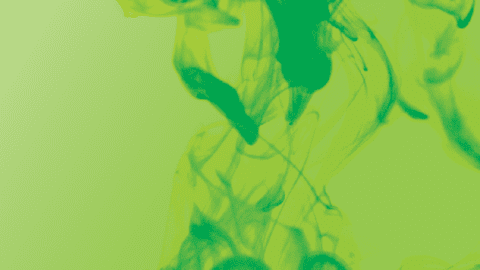October is Breast Cancer Awareness Month. As such, we would like to take a moment to focus on how nutritional and supplement therapy can play a role in the prevention and treatment of cancer. When we look at how antioxidants impact cancer, we can see that there is scientific documentation of reduced development of breast cancer in those with high dietary intake of antioxidants. One study in late 2014 titled The Rotterdam Study provides this information: “These results suggest that high overall dietary antioxidant capacity are associated with a lower risk of breast cancer.”1 Women who had higher rates of antioxidant intake via diet were less likely to develop breast cancer. What about those who already had breast cancer? Could it help with treatment? A March 2014 issue of Anticancer Research featured a study showing the use of lycopene and beta-carotene in cell death of human breast cancer cell lines. “Our findings show the capacity of lycopene and beta-carotene to inhibit cell proliferation, arrest the cell cycle in different phases, and increase apoptosis.”2 Vitamin C has also been studied in terms of its potential impact on breast cancer deaths and has been shown to have a positive effect on mortality rates. “Dietary vitamin C intake was also statistically significantly associated with a reduced risk of total mortality and breast cancer-specific mortality.”3
If we can look at the data and determine that higher intake of antioxidants and nutrients can not only reduce development of breast cancer but can also positively impact the mortality rates of cancer, the question then becomes how do we encourage our patients and clients to incorporate these into their diets with higher frequency? We must educate them on the role antioxidants play and the resources available to obtain them, whether from foods or supplements. For example, lycopene is a nutrient that is highlighted for its anticancer properties, specifically in reference to breast cancer. Lycopene is a carotenoid that gives many fruits and vegetables their red color. Unlike other carotenes, lycopene does not get converted into vitamin A. The top 10 sources of dietary lycopene are:
- Guava
- Watermelon
- Tomatoes (cooked)
- Papaya
- Grapefruit
- Sweet Red Peppers (cooked)
- Asparagus (cooked)
- Red (purple) cabbage
- Mango
- Carrots
Continued from BioMed Today:
Encouraging patients to incorporate more foods with lycopene, like those listed above, into their diets is one component. Supplements can also be suggested as a potential option. This is especially true in the case of vitamin D, for which there are many studies showing its role in the prevention of cancers. Adequate vitamin D is being revealed as a critical factor for preventing many diseases, including breast cancer, today.8 “Case-control studies and laboratory tests have consistently demonstrated that vitamin D plays an important role in the prevention of breast cancer.”9 Unfortunately due to a variety of reasons, many people are deficient in vitamin D which then can then compromise optimal health. Testing for vitamin D levels, ideally twice a year, is a great way to monitor this critical nutrient and help your patients optimize their health and wellness. Supplementation can then also be recommended to optimize levels. Another promising resource for warding off disease and cancer is curcumin, the extract of the turmeric root. Because of its potent antioxidant and antimicrobial properties, it is being studied extensively for its potential in cancer treatment. The American Cancer Society’s website has this to say about it: “Curcumin can kill cancer cells in laboratory dishes and also slows the growth of the surviving cells. Curcumin has been found to reduce development of several forms of cancer in lab animals and to shrink animal tumors.”4 The typical therapeutic dose, between 3 and 10 grams per day, exceeds what is normally used in cooking and obtained through dietary consumption so a supplement would be most effective.
Could another reason for the efficacy of curcumin on cancer cell death be its potent anti-inflammatory properties? Curcumin has been studied widely for both its safety and anti-inflammatory potential.5,6 “The laboratory studies have identified a number of different molecules involved in inflammation that are inhibited by curcumin including phospholipase, lipooxygenase, cyclooxygenase 2, leukotrienes, thromboxane, prostaglandins, nitric oxide, collagenase, elastase, hyaluronidase, monocyte chemoattractant protein-1 (MCP-1), interferon-inducible protein, tumor necrosis factor (TNF), and interleukin-12 (IL-12).”7 We see science validating the role our lifestyle has in development of cancer. Diet, exercise, supplementation, our stress level, and other factors all contribute to the whether or not we develop disease and also to our ability to reverse it. It is important to find ways to offer a variety of prevention and treatment options that work with our patients’ lifestyles.
Clinical References:
- Pantavos A, Ruiter R, Feskens E, E deKeyser C, Hofman A, H Stricker B, H Franco O, C Kiefte-deJong J (2014). Total dietary antioxidant capacity, individual antioxidant intake and breast cancer risk: The rotterdam study, International Journal of Cancer. 2014 Oct 4. doi: 10.1002/ijc.29249. [Epub ahead of print]
- Gloria NF, Soares N, Brand C, Oliveira FL, Borojevic R, Teodoro AJ (2014).Lycopene and beta-carotene induce cell-cycle arrest and apoptosis in human breast cancer cell lines, Anticancer Research. 2014 Mar;34(3):1377-86.
- Harris HR, Orsini N, Wolk A (2014). Vitamin C and survival among women with breast cancer: a meta-analysis,European Journal ofCancer. 2014 May;50(7):1223-31. doi: 10.1016/j.ejca.2014.02.013. Epub 2014 Mar 7.
- Turmeric (2012). Retrieved on October 5, 2014 from Link
- Chainani-Wu NJ (2003). Safety and anti-inflammatory activity of curcumin: a component of tumeric (Curcuma longa), Journal of Alternative and Complementary Medicine. 2003 Feb; 9(1):161-8.
- Jurenka, JS (2009). Anti-inflammatory Properties of Curcumin, a Major Constituent of Curcuma longa: A Review of Preclinical and Clinical Research, Alternative Medicine Review. Volume 14, Number 2, 2009.
- Nita Chainani-Wu (2003). The Journal of Alternative and Complementary Medicine. February 2003, 9(1): 161-168. doi:10.1089/107555303321223035.
- Vitamin D and Cancer Prevention (2013). Retrieved on October 5, 2014 from http://www.cancer.gov/cancertopics/factsheet/prevention/vitamin-D
- Walentowicz-Sadłecka M, Sadłecki P, Walentowicz P, Grabiec M (2013). The role of vitamin D in the carcinogenesis of breast and ovarian cancer, Ginekologia Polska. 2013 Apr;84(4):305-8.




